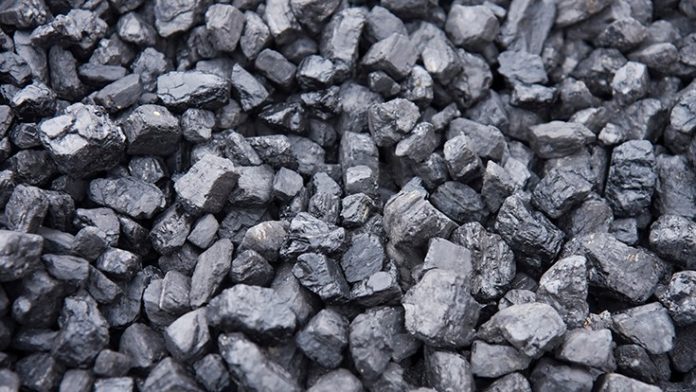A few months ago, the US Department of Energy’s (DOE) Office of Fossil Energy (FE) had announced plans to invest $6 million in Federal funding for cost-shared research and development projects to further explore the use of coal waste as a 3D printable material.
The whole project is entitled “Advanced Coal Waste Processing: Production of Coal-Enhanced Filaments or Resins for Advanced Manufacturing and Research and Development of Coal-Derived Graphite”. It appears under the category “Funding Opportunity Announcement 2405”.
In the end, $7 million have been granted for seven projects which have been divided into two categories: Coal-Based Filaments or Resins for Additive Manufacturing on the one hand, and Developing Pathways to Coal-Derived Graphite on the other hand.
Coal-Based Filaments or Resins for Additive Manufacturing.
This associated area of interest (AOI) focuses on coal-based filaments or resins with superior properties or economics, through either Fused Deposition Modeling (FDM) or Stereolithography.
- Coal-Enhanced PEEK Filament Production for Additive Manufacturing in Industrial Services — Baker Hughes Energy Transition LLC (Houston, Texas) and its team plan to enhance polyether ether ketone (PEEK) filaments, a critical feedstock used in additive manufacturing, with coal-derived graphene-like materials. The scope of work will focus on FDM, a promising and high-growth additive and manufacturing technique. This study will manufacture a suite of selected parts, including seals, spacers, washers and backup rings using PEEK and coal-enhanced PEEK to baseline and compare overall performance.
DOE Funding: $906,210; Non-DOE Funding: $288,775; Total Value: $1,194,985
- Fused Deposition Modeling Additive Manufacturing of Carbonized Structures Via Waste-Enhanced Filaments — Ohio University (Athens, Ohio) aims to develop carbonizable filaments that can be used in FDM printers to manufacture articles for building/construction, tooling and metals castings industries. Coal-based filaments offer environmental, industrial and 3D printing advantages that include conversion of coal wastes into FDM filaments with superior properties and costs.
DOE Funding: $1,000,000; Non-DOE Funding: $250,000; Total Value: $1,250,000
- Coal Waste-Enhanced Filaments for Additive Manufacturing of High-Temperature Plastics and Ceramic Composites — Semplastics EHC (Oviedo, Florida) plans to apply its materials technology to develop and test filament material suitable for use in a commercially available 3D printer using two different coal wastes. The project will produce several demonstration objects using the best filament formulation.
DOE Funding: $999,874; Non-DOE Funding: $267,949; Total Value: $1,267,823
- Lab-scale Production of Coal-Derived Graphene Particle Bonded Filaments — University of Delaware (Newark, Delaware) aims to develop a lab-scale manufacturing process to fabricate filaments with high-carbon content for FDM 3D printing use. The project will use graphene particles derived from domestic coal wastes as the feedstock. The proposed technology will strengthen the United States as a leader in synthetic fiber research and development and manufacturing.
DOE Funding: $1,000,000; Non-DOE Funding: $250,000; Total Value: $1,250,000
Developing Pathways to Coal-Derived Graphite.
This AOI focuses on developing pathways for the economical production of coal-derived graphite for use in such applications as battery anodes, bipolar plates for proton exchange membrane fuel cells, supercapacitor electrodes and substrates for carbon-carbon composites and lubricants.
- Utilization of Carbon Supply Chain Wastes and Byproducts to Manufacture Graphite for Energy Storage Applications — Ohio University (Athens, Ohio) plans to use coal wastes and byproducts as a domestic feedstock for the production of battery-grade graphite materials. The project will compare the physical properties of coal-derived graphite to commercially available battery-grade graphite. Potential impacts include reducing U.S. dependence on foreign sources of battery-grade graphite while creating prevailing wage jobs in economically destressed communities in the Appalachian Region.
DOE Funding: $1,000,000; Non-DOE Funding: $337,920; Total Value: $1,337,920
- Molded Graphite Products Synthesized from Waste Coal — Touchstone Research Laboratory (Triadelphia, West Virginia) and partner Virginia Polytechnic Institute and State University (Virginia Tech) aim to implement the hydrophobic-hydrophilic separation process developed at Virginia Tech for reducing mineral deposits in coal. Research and development will focus on cleaning low-, medium- and high-rank coal and resulting waste coal streams to sufficient levels, making it suitable for feedstock in high-value synthetic graphite processes.
DOE Funding: $1,000,000; Non-DOE Funding: $250,000; Total Value: $1,250,000
- Advanced Processing of Coal and Coal Waste to Produce Graphite for Fast-Charging Lithium-Ion Battery Anode — University of North Dakota Energy & Environmental Research Center (Grand Forks, North Dakota) plans to validate an approach to make high-grade graphite from North Dakota lignite and lignite coal waste and to fabricate and test a fast-chargeable lithium-ion battery anode prototype made from the produced graphite. Anticipated project impacts include providing an economic boost to coal and power plant communities in North Dakota by meeting the needs of the growing lithium-ion battery market.
DOE Funding: $1,000,000; Non-DOE Funding: $542,469; Total Value: $1,542,469
Remember, you can post job opportunities in the AM Industry on 3D ADEPT Media free of charge or look for a job via our job board. Make sure to follow us on our social networks and subscribe to our weekly newsletter : Facebook, Twitter, LinkedIn & Instagram ! If you want to be featured in the next issue of our digital magazine or if you hear a story that needs to be heard, make sure you send it to contact@3dadept.com






